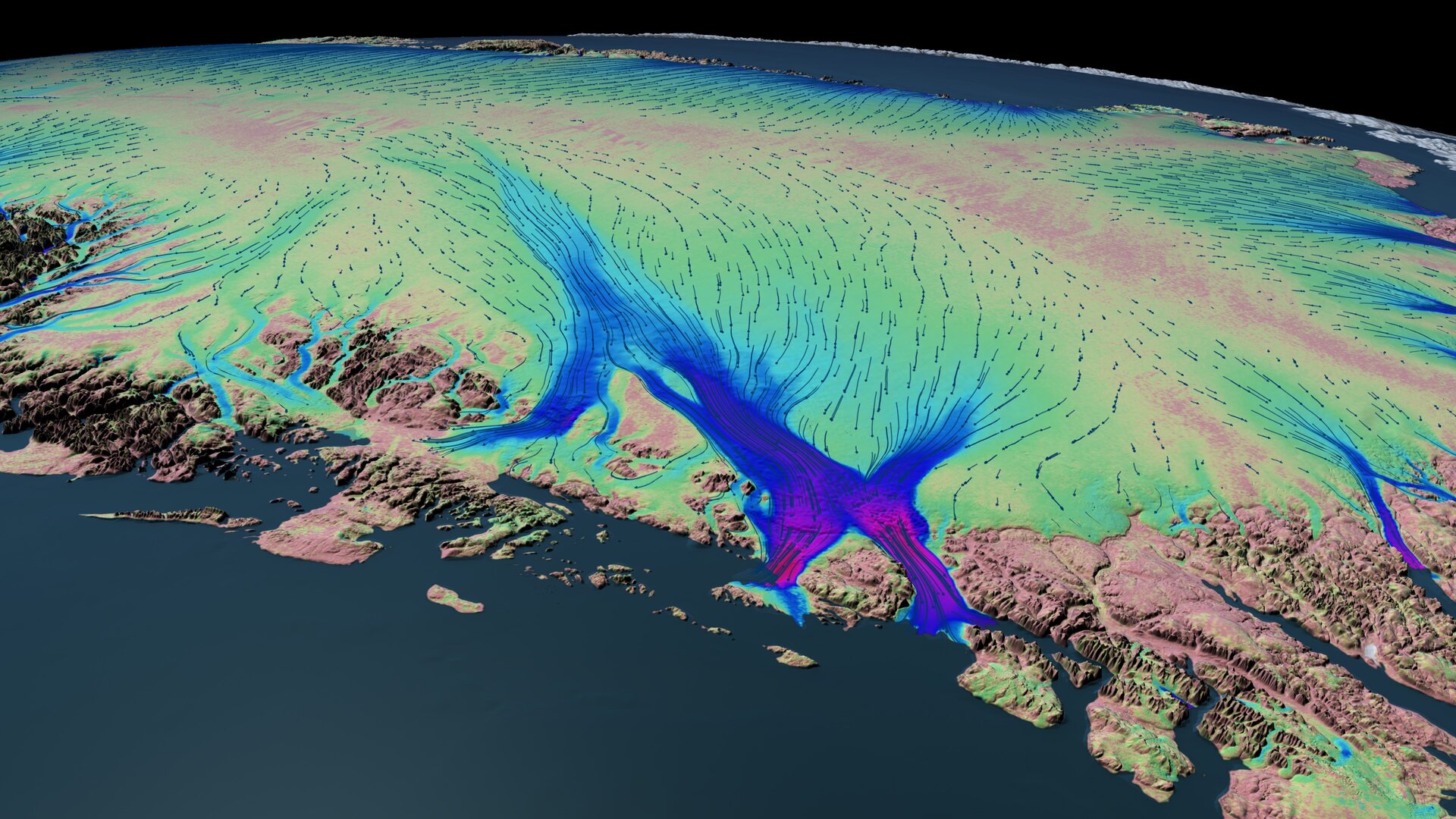Nioghalvfjerdsfjorden ("79N Glacier") and Zachariae Isstrøm
The advent of satellite observations over the Greenland Ice Sheet in the 1990’s showed that contrary to expectations, outlet glaciers were accelerating and thinning, and therefore losing ice mass causing sea level rise. Nioghalvfjerdsfjorden Glacier (otherwise known as 79N Glacier) and Zachariae Isstrøm are two marine-terminating, neighbouring ice streams on the North East coast of the Greenland Ice Sheet. Collectively, Nioghalvfjerdsfjorden and Zachariae Isstrøm drainover 12 % of the Greenland Ice Sheet and hold enough ice mass to raise global sea levels by 1.1 metres.

Key processes and drivers: Presence and composition of landfast sea ice and mélange, interannual variability in buttressing force against the glacier, change in ocean heat impacting the stability, changing flow of mélange and impact of diverging ice discharge across grounding line.
Case study objectives
- To build a comprehensive suite of EO-based data (existing and developed) characterising recent changes of 79N and Zachariae Isstrøm and their surrounding ocean and sea ice to characterise extreme events that are likely to have implications for the glaciers, their calving rates, and the ice stream feeding them.
- To perform a scientific analysis of the relationship between sea ice/iceberg mélange conditions in the fjord, landfast ice on Belgica Bank, and the behaviour of the outlet glaciers entering Nioghalvfjerdsfjorden, with a focus on quantifying the impact of melange backstress on glacier flow rates and Greenland ice sheet discharge.
- To analyse freely available auxiliary climate and ocean datasets to better understand the environmental forcing mechanisms driving change.
- To establish a framework for assessing the interconnectedness of extreme mélange conditions and glacier dynamics, driving feedback processes across the critical zone for ice-ocean interactions.